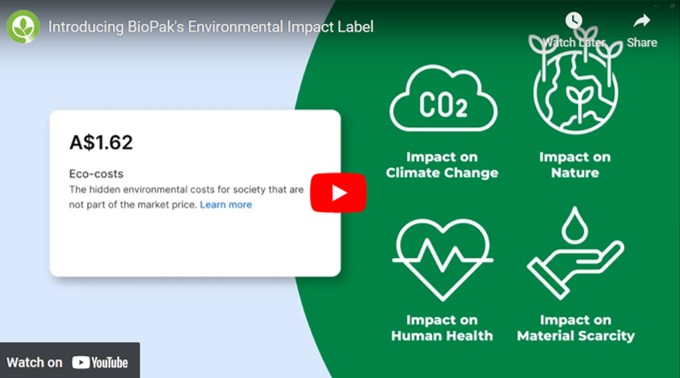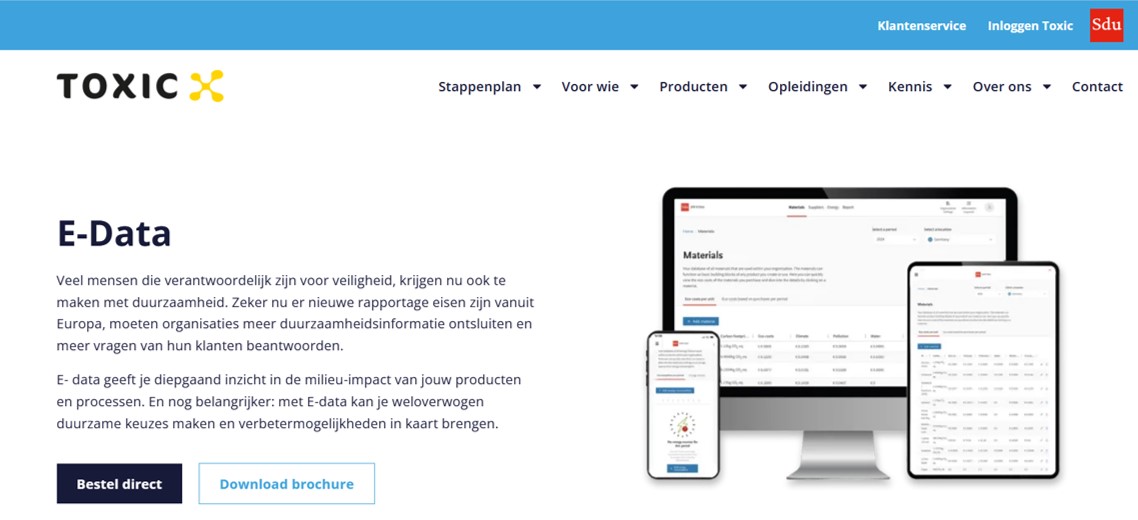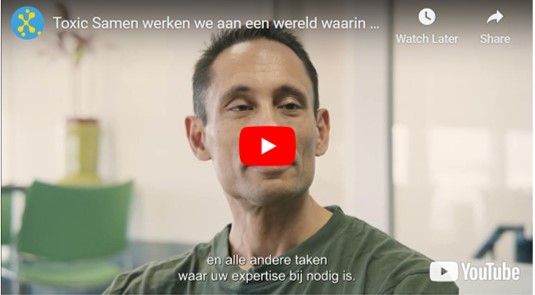Remarkable examples of Eco-costs
Case 1 BioPak Australia
A remarkable company using Eco-costs in their marketing is BioPak. BioPak is recognised as a market leader in the sustainable food packaging sector across Asia Pacific and Europe. The company’s expansion has been driven by increasing demand for compostable alternatives to fossil fuel-based single-use plastics and bolstered by widespread plastic ban legislation.
BioPak uses Eco-costs in its Environmental Impact Label across business strategy, sales, and marketing. The Label is designed to increase transparency, accountability, easy sustainable decision-making, and BioPak’s commitment to combating industry-wide greenwashing. BioPak CEO Gary Smith says, “Vague sustainability claims are no longer good enough. There’s a growing demand for impact data to substantiate claims based on scientific evidence. Many companies are tunnel-visioned on CO2, and we want to urge these businesses to go beyond this metric and account for many other important impact categories that often get disregarded. We genuinely hope that our Environmental Impact Label can drive significant and meaningful change in the industry, setting a benchmark for how we can all do better and champion transparency.”
BioPak is convinced that, long-term, the future of eco-costs has the capability to not only be used as a guide to drive decision-making for customers but also to be a significant benchmark to invest in prevention costs to reduce impact.





